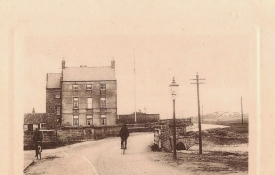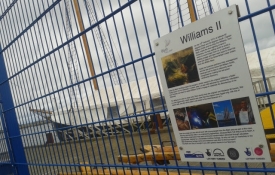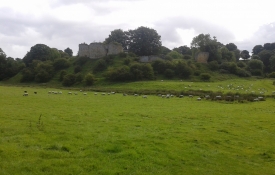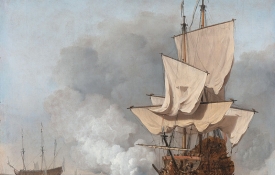Welcome to the Community View section of the website. This area is dedicated to articles of interest, community information and local topics that are submitted by members of the public or guest writers. It is also the main section dedicated to the Youth Media Group Project.
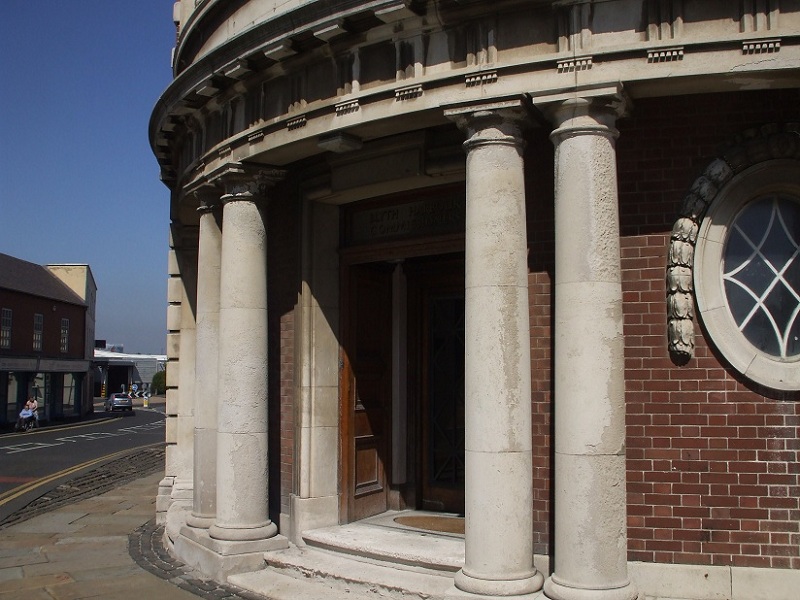
The formation of the Blyth Harbour Commission in 1882 was arguably the most important development in the history of the port of Blyth. As a public body they were able to raise the finances to turn the harbour into a deep-water port enabling the growth and prosperity to occur by which Blyth became the busiest port and shipbuilding facility in England by the 1960s.
In the years prior to this date the harbour was controlled by the Blyth Harbour and Dock Company whose main shareholder was Sir MW Ridley the landholder of Blyth. Many improvements had been made to the harbour in the mid-19th century including breakwaters, tidal basins, quays and shipbuilding yards. Four steam vessels were employed to tow sailing vessels out of the harbour and on the North side of the river good progress had been made in creating coal shipping spouts for Cambois Colliery.
In 1868 the first screw collier vessel, an iron ship, owned by the Cowpen Coal Co, was loaded at Blyth Harbour. There was an ever increasing output of coal from the surrounding collieries, recently opened in the Great Northern Coalfield, a great percentage of which was shipped to Holland, Germany and other European countries as well as coastwise. As CE Baldwin pointed out in “History of the Port of Blyth”:
“It was the growth of the iron ship which required additional depth of water and facilities which the Harbour Company were unable to provide and caused the trade of the port to sink to such a low ebb prior to the formation of the Harbour Commission”.
In 1857 an agreement was reached with the Blyth and Tyne Railway Company for the construction of a Blyth Harbour branch line. The work was supposed to be completed within five years.
On 1st August 1858 a contract was made with Mr Scott to have the river channel dredged to a depth of 17 feet. The project continually went over budget and the specified work was not carried out. However it did cause the end of the fording point across the river from the Seven Stars on the North bank. The Harbour Company was also plagued by other problems including disputes with various organisations over harbour dues and the encroachment of the Thoroton and Croft estate and Cowpen Coal Co. A ship had her copper sheathing damaged on an uneven-bottomed berth for which the Harbour Company had to pay out a large sum in compensation.
The directors had spent almost all of their capital but had little improvement to show for it in their failed schemes, including the construction of an eastern breakwater which did not work, resulting in the engineer being dismissed and replaced, in 1862, by the firm of Thomas Meik. Meik proposed work, in 1866, to extend the pier and extensive dredging costing £50,000 (about £5.5 million today). The extension of the pier would keep the channel from re-silting once dredging had been undertaken. The directors would need to do this by taking out a public works loan and raising £15,000 in preference shares. Some works were carried out but not the improvements made to facilitate the demand from the Coal companies for larger ships even though Cowpen Coal Co had stated an intention to ship all their coal at new berths on the river. Meik repeatedly stated that with only 3 to 4 foot of water at the bar only vessels of 1000 tons could be accomodated whereas ships of 2000 tons where now the norm in the coal industry. He diplomatically urged the directors to move with the times. In 1868 a petition was received from shipowners complaining of the unsatisfactory state of the berths. In 1874 the North Eastern Railway took over the Blyth and Tyne Railway Co but made no provision or improvement for the shipping of coal on the Blyth.

However, in 1878 Sir Matthew White Ridley died and his son became the new landholder. He seemed to be more responsive to the proposals.
In 1881 Meik once again wrote to the board explaining that as a private company they could not borrow the money to carry out the necessary works:
“As a private company you are not in the best position for raising money advantageously. You are debarred from the Public Works Loan Commissioners, who may lend to public trusts. You are restricted under your Act of 1858 from borrowing to a greater extent than £27,000 until the whole of your capital is subscribed and half is paid up… It appears, therefore, that you will not be able to extend or improve the harbour without applying to Parliament for further powers. This step should be taken next session and we wish you to consider whether in doing so you should not take steps for dissolving the company and handing over the undertaking to a Public Harbour Trust or Commission, consisting of representatives of different interests involved. The advantages of following such a course will be: First that you can follow the example of the Tyne, Wear, Tees and other Harbour Trusts in borrowing money at a low rate of interest from the Public Works Loan Commissioners…”
At a meeting on 5th November 1881 the directors decided to take this advice and form a commission. And to cut a long story short the harbour was developed and became very successful.

